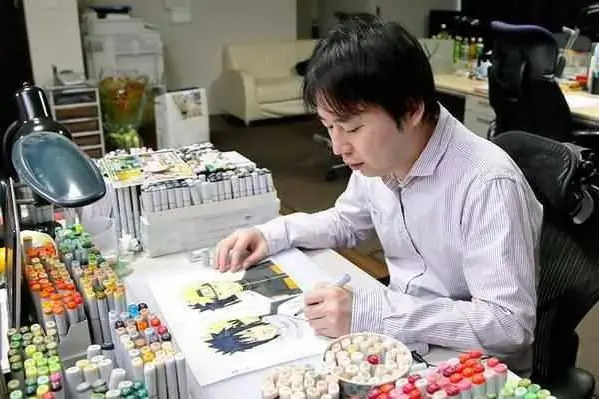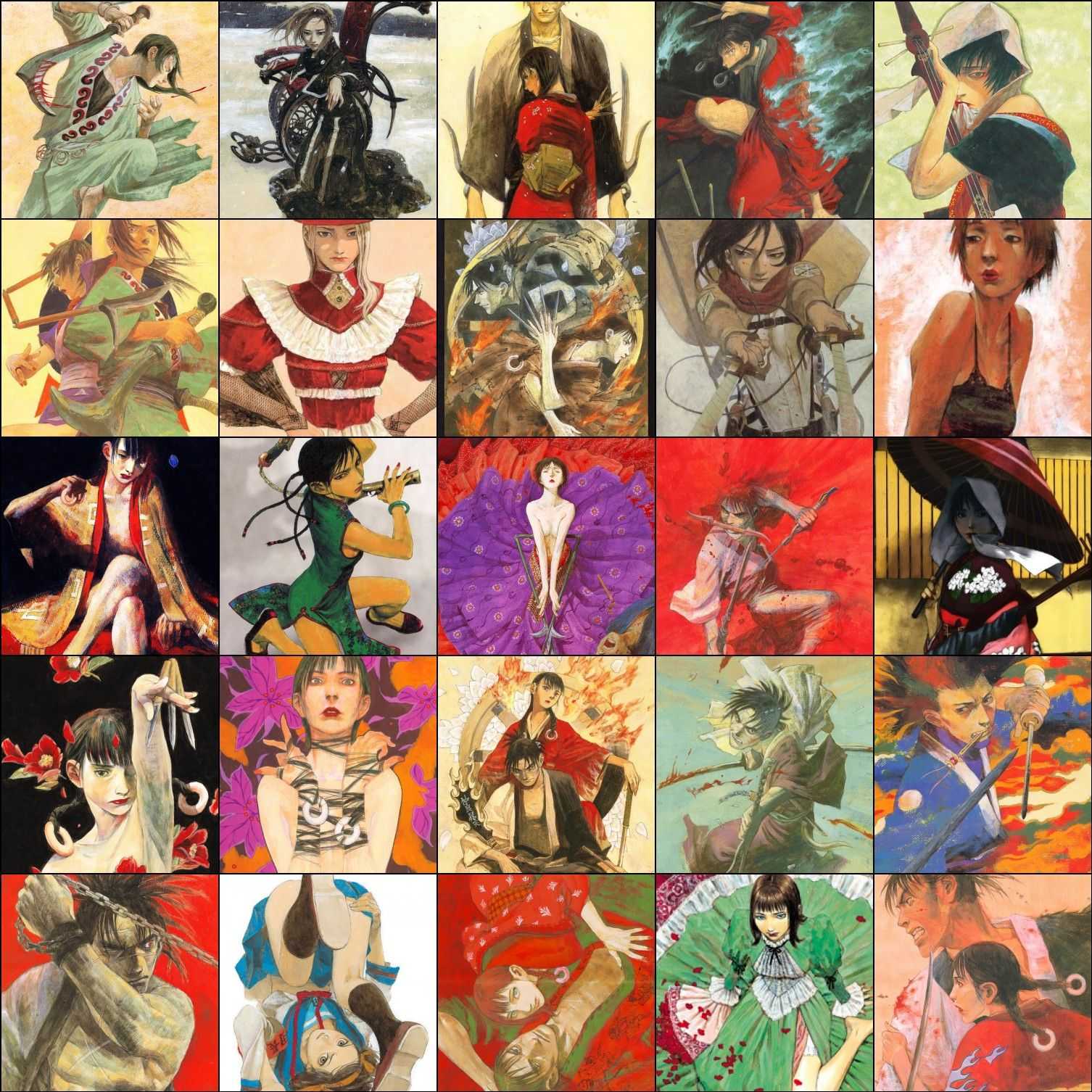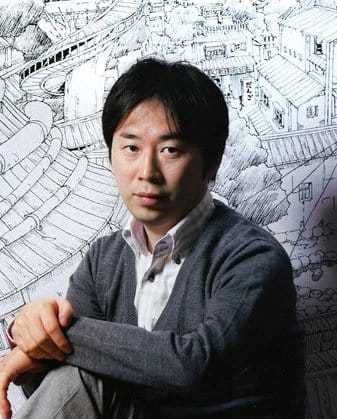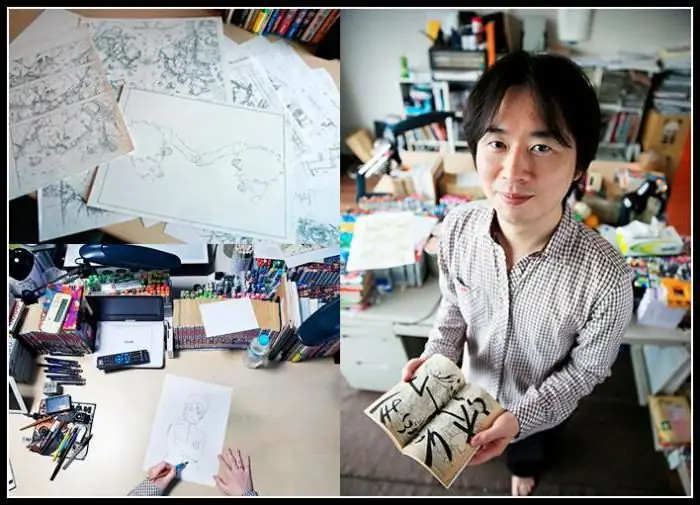Conclusion
Masashi Kishimoto is a masterful storyteller, and his writing style has been essential to the success of Boruto. His use of dialogue, his ability to create suspense, and his emotional writing have all had a major impact on the series. He has created a cast of characters that readers can connect with and care about, and his intricate plotlines have kept readers engaged and invested in the series. Through his work, Kishimoto has managed to create a beloved series that has resonated with audiences around the world.
(Note: Is this article not meeting your expectations? Do you have knowledge or insights to share? Unlock new opportunities and expand your reach by joining our authors team. Click Registration to join us and share your expertise with our readers.)
The Story Behind the Writer of Boruto: An Interview with Masashi Kishimoto
Masashi Kishimoto was born in 1974 in Okayama, Japan. He first became interested in drawing at an early age, and his love for manga grew as he read works by Akira Toriyama and Hiroyuki Takei. After graduating from high school, he enrolled in the Osaka University of Arts to pursue a degree in manga art. During this time, he wrote and drew several one-shots, or short stories, but none were successful. After graduation, he began work on Naruto, which would eventually become his most famous work.
In an exclusive interview with Masashi Kishimoto, he discussed his inspiration for Boruto and the creative process behind creating the series. “I wanted to create a story that was more than just action and adventure,” said Kishimoto. “I wanted to explore themes of family, friendship, and loyalty, and I wanted to create characters that people could relate to and care about.” He also discussed the challenges of creating a sequel to Naruto, which had already become a worldwide phenomenon. “It was intimidating at first because I knew I had to live up to the expectations set by the first series. But I think I managed to do that, and I’m proud of the work I put into Boruto.”
First confession
After graduating from high school in 1993, Masashi Kishimoto entered an art college. Such a choice is quite obvious, because the mangaka no longer wanted to rely on the opinions of others, and therefore he needed to gain genuine confidence in his abilities. Therefore, he successfully passed the entrance exams and entered one of the best colleges in Japan.
 japanese mangaka masashi kishimoto
japanese mangaka masashi kishimoto
It should be noted that Masashi grasped new material on the fly, thanks to which he quickly won the appreciation of teachers. His thirst for knowledge was phenomenal, and only his passion for drawing could surpass it. That is why, at the end of his second year, he decides to try his luck again and enter his work in the competition for young mangaka.
And so in 1995, at the Hop Step Award exhibition, Kishimoto presented his manga called «Mechanism» (original name — Karakuri) to the world. And although some aspects of his skill were still criticized, the debutant’s victory was unconditional.
Exploring the Creative Mind of Masashi Kishimoto, Creator of Boruto
Masashi Kishimoto’s writing style is unique and engaging, and it is evident in the success of Boruto. His use of dialogue is masterful, as he manages to develop characters and move the plot forward through conversations between characters. He also has a knack for creating suspense and tension, often leaving readers wanting more. His writing is also full of emotion, as he is able to capture the feelings and struggles of each character.
Kishimoto’s impact on the series is undeniable. From creating the characters and developing the plotlines to crafting a unique narrative, Kishimoto’s vision for Boruto has been essential to its success. He has managed to bring his own personal touch to the series, making it stand out from other manga and anime. Kishimoto’s writing style has allowed him to tell a compelling story that resonates with readers around the world.
What Else Has He Done?
He is also known for his ero-guro work, most notably his art book Hitodenashi no Koi (Brute Love), which contains some very violent and graphic depictions of tortured woman. Some have criticized Samura for having a ryona fetish, but in the postscript of Brute Love he makes it very clear that he has no desire to torture woman and is somewhat regretful looking back at his work. He also urged his fans not to show the book to anyone who finds this kind of material offensive and I also urge the same as far as looking up this type of art.
Despite dabbling in ero-guro, Samura’s depiction of women generally tends to be very different from other manga artists. In an interview Samura stated that he doesn’t view women in a sexual way and tends not to focus on things like breasts, but instead on their faces and facial expression trying to make them look as pretty as possible.
He mentions that most of his female characters tend to have sad or painful expressions. He even believes on a fundamental level he is not as good as women and was highly inspired by the works of Rumiko Takahashi and Fumiko Takano. Many of his fans even wrote letters to him thinking he was a female artist because of the way he draws women. He also talks about his desire to create independent female characters, which manifested in character of Akagi from Ohikkoshi. All of his works have female characters in a superior position to their male counterparts; even in his most well received work Blade of the Immortal, he states that the strongest character is not Manji, but Makie.
And again in pursuit of the old dream
The turning point came in 1988. Speaking at regular baseball competitions, Masashi Kishimoto saw a poster for a new manga called «Akira». The author painted it in an unusual, colorful style, which immediately caught the young man’s eyes. It was then that Masashi finally realized one simple truth — more than anything, he wants to be a mangaka.
Initially, the young artist tried to imitate the style of drawing that he saw on the pages of a new book. Masashi Kishimoto was sure that this was the only way he could become a great manga artist. However, over the years, he became more and more aware of the fact that he needed his own style and inspiration.
So with the transition to high school, Masashi Kishimoto began to work hard to improve his skills. Moreover, he wanted to enter the prestigious Japanese writing competition. Alas, thenhis first work did not pass the test of his parents, which is why the young artist decided to retreat from his venture.
Art Style and Influences
As far as his art style goes he was highly influenced by Otomo Katsuhiro, Yoshikazu Yasuhiko and Yukinobu Hoshino. During his time in college he gained a proficient knowledge of human anatomy and poses which contributed to his very realistic looking characters. The way he draws hands is particularly distinctive and is praised by Naruto creator Masashi Kishimoto. The action scenes in his manga also have a very distinct rhythm and movement to them and often make use of zooming in and out which is explained in detail in this blog post. Samura prefers to draw in black and white, despite being in a course that focused on oil painting during college…which he did later drop out of.
In addition to his more action oriented works he has also written many comedy manga. The most well known among them is Ohikkoshi. Which he wrote to mirror an outrageous 80’s love comedy. He often incorporates parody and dark humor into his works, like imagining zoo animals as Pokemon in Ohikkoshi, and turning the world into a paradise of cat girls after a virgin’s 30th birthday goes horribly wrong in Gensou Gynaecocracy.
 A 5×5 collection of some of my favorite illustrations by Samura. These include his own original characters, as well as his interpretations of popular anime characters such as Haruhi Suzumiya and Mikasa Ackerman
A 5×5 collection of some of my favorite illustrations by Samura. These include his own original characters, as well as his interpretations of popular anime characters such as Haruhi Suzumiya and Mikasa Ackerman
Masashi Kishimoto Net Worth
Masashi Kishimoto’s net worth is reckoned to be around $25 million. The increase of his net worth or income is because of his various work from films, novels, and other publications. Based on the report, Masashi is considered to be the 6th richest manga creator in Japan. The first one is the legendary Eiichiro Oda with $230 million, followed by Akira Toriyama with his Dragon Ball and Gosho Aoyama with the acclaimed mystery manga series, Detective Conan.
The next order is Hajime Isayama with $45 million of wealth, accompanied by Yoshihiro Togashi and Masashi himself. After that, there are Hiroki Araki, Yoichi Takahashi with his Captain Tsubasa, Keisuke Itagaki, and George Morikawa in number 10 who is famously written Hajime no Ippo.

Income Per year
Based on his various work and publications in Japan and all around the world, Masashi Kishimoto net worth or salary is being counted with a total of around $25 million.
How much did Masashi Kishimoto make from Naruto?
Although there is no exact number about Masashi Kishimoto net worth from Naruto, the $25 million he received during his career mostly came from his work for Naruto.
How does Masashi Kishimoto make money?
It was stated previously that Masashi Kishimoto net worth or wealth came from the publishing of his manga and the TV or film adaptation, as well as his other work in novels and films.
Ассистенты
- Такахаши Казухиро (高橋一浩)
- Каджиса Осаму (加治佐修)
- Икемото Микио (池本幹雄)
- Кавахара Такеми (河原武実)
- Нишия Коичи (西屋浩一)
- Тасака Рё (田坂亮)
- Окубо Акира (大久保彰)
- Итакура Юичи (板倉雄一)
- Мураками Масаки (村上正樹)
- Сато Атсухиро (佐藤敦弘)
- Ширасака Акио (白坂彰男)
- Тайра Кенджи (平建史)
Примечания
- ↑ Хьё но Шо, страница 205
- Том 7, страница 66
- Том 7, страница 104
- Том 8, страница 27
- Том 8, страница 66
- Том 8, страница 86
- ↑ Том 10, страница 157
- Том 13, страница 26
- Том 13, страница 66
- Том 15, страница 66
- Том 15, страница 86
- Том 15, страница 106
- Том 15, страница 126
- Том 16, страница 150
- Том 4, страница 26
- ↑ Naruto Interview: The Beginning — Weekly Shōnen Jump №51, 2014
- Том 4, страница 46
- Weekly Shonen Jump №45, страница 178, 2015
- Том 4, страница 102
- ↑ Том 11, страница 126
- Том 11, страница 46
- ↑
- «10th Anniversary: The Masashi Kishimoto Files» — Shōnen Jump (Viz Media) №7 (11), ноябрь 2009
- Shonen Jump talks with Naruto creator Masashi Kishimoto: The Hokage Speaks — американский Shōnen Jump, май 2006
- ↑ Том 24, страница 168
- ↑ Том 6, страница 66
- Uzumaki, страница 138
- Uzumaki, страница 139
- Uzumaki, страница 127
- Хьё но Шо, страницы 74-81
- Interview: Tracking Down the Source — Shōnen Jump Naruto Collector 3 (Viz Media), август 2007
- Interview with Masashi Kishimoto (Creator of Naruto) — Weekly Shōnen Jump Alpha (Viz Media), страницы 118–121, 30 января 2012
- Uzumaki, страницы 112-114
- Uzumaki, страница 118
- , том 1, страница 8
- Том 6, страница 26
- Том 6, страница 106
- Том 6, страница 146
- Том 13, страница 126
- Том 13, страница 165
- Том 28, страница 28
- Том 43, страница 60
| |
A Behind-the-Scenes Look at the Making of Boruto With Masashi Kishimoto
Kishimoto’s involvement in the making of Boruto has been integral to its success. He worked closely with directors to make sure that the anime adaptation stayed true to his original story. He also collaborated with other writers to craft an engaging and exciting narrative. Together, they have been able to bring Kishimoto’s vision for Boruto to life.
Kishimoto also ensured that the series was well-paced and entertaining. He worked with the directors to create thrilling action sequences and intense battles. He also crafted a unique soundtrack for the series, ensuring that the music complemented the visuals and added to the overall atmosphere.
Masashi Kishimoto Individual Information
To underline, Masashi Kishimoto is one of the wealthiest manga artists from Japan who create Naruto since the series began in 1999.
myanimelist.net
- Legal Name & Stage Name: Both his legal name and stage name are Masashi Kishimoto.
- Date of Birth: Born in a town called Nagi, Japan, on November 8, 1974.
- Gender & Height: Masashi is a male manga artist with a height of 1.68 m.
- Nationality: Masashi Kishimoto’s nationality is Japanese.
-
What is Masashi Kishimoto Best Known for?
- He is remarkably known as the artist who write and illustrate the famous manga series Naruto.
- Additionally, the genius manga creator is also a screenwriter, television producer, and film Producer.
Examining the Characters and Plotlines of Boruto Through the Eyes of its Writer
Kishimoto’s approach to characterization is unique and effective. He takes the time to get to know each character, exploring their motivations and inner struggles. He also creates relationships between characters, allowing them to grow and change throughout the series. By doing so, he creates a cast of characters that readers can connect with and care about.
Kishimoto’s plotlines are also carefully crafted. He weaves together different storylines and reveals secrets and mysteries in unexpected ways. He often leaves readers guessing, creating suspense and anticipation. His intricate plotlines have kept readers engaged and invested in the series.
How Masashi Kishimoto Developed Boruto Into a Successful Series
Kishimoto’s approach to writing Boruto was thoughtful and deliberate. He first developed the characters and plotlines before moving on to the actual writing. He created a strong cast of characters and crafted intricate plotlines that kept readers guessing. He also developed a unique narrative, weaving together different storylines and creating an immersive world for readers to explore.
Kishimoto also worked closely with directors and other writers to ensure that his vision for Boruto was captured on screen. He collaborated with directors to make sure that the anime adaptation was true to his original story. He also worked with other writers to craft an engaging and exciting narrative. Together, they have been able to bring Kishimoto’s vision for Boruto to life.
Analyzing the Writing Style of Masashi Kishimoto and Its Impact on Boruto
Kishimoto’s writing style is characterized by his skillful use of dialogue and his ability to create suspense. He often uses conversations between characters to move the plot forward and to develop characters. He also knows how to create tension and keep readers hooked, using cliffhangers and other techniques to keep them guessing. His writing is also full of emotion, as he is able to capture the feelings and struggles of each character.
Kishimoto’s writing style has had a major impact on Boruto. His use of dialogue has allowed him to create complex characters and develop intricate plotlines. His ability to create suspense has kept readers coming back for more. And his emotionally charged writing has made the series resonate with readers around the world.
Jobs
Manga
- Karakuri One-Shot ( 1997 — 1998 ) (Publicado En Akamaru Jump )
- Naruto ( 1999 — 2014 ) (Published in Shūkan Shōnen Jump )
- Bench One-Shot () (Publicado en Weekly Shōnen Jump)
- Mario One-Shot () (Publicado en Jump Square)
- Naruto: The Seventh Hokage and the Month of Scarlet Spring (Naruto Spin-off) ( 2015 )
- Samurai 8: The story of Hachimaru , together with Akira Okubo ( — ) (Published in Weekly Shonen Jump )
- Boruto: Naruto Next Generations , in conjunction with Mikio Ikemoto (As of November 2020, when the manga gets a script change). Published in V Jump magazine
Films
| Year | Movie |
|---|---|
| Naruto the Movie: The Snow Princess Rescue! | |
| Naruto the Movie 2: The Illusory Ruins Deep in the Earth | |
| Naruto the Movie 3: The Great Excitement! Animal panic on the island of the Moon | |
| Naruto Shippūden: The Movie | |
| Naruto Shippūden 2: Bonds | |
| Naruto Shippūden 3: Inheritors of the Will of Fire | |
| Naruto Shippūden 4: The Lost Tower | |
| Naruto Shippuden 5: Prison of Blood | |
| Naruto Shippūden 6: ninja way | |
| The Last: Naruto The Movie | |
| Boruto: Naruto The Movie |
Soap operas
- Naruto: Tales of a Gutsy Ninja (NARUTO : Dokonjō Ninden ) — , Ilustrador
- Naruto: Blood Prison (NARUTO : Buraddo Purizun ) — , Ilustrador
- Naruto Jinraiden: The Day the Wolf Howled (NARUTO Jinraiden: Ōkami no Naku Hi ) — , Ilustrador
- Naruto: Kakashi’s Story (NARUTO : Kakashi Hiden — Hyōten no Ikazuchi ? ) — , illustrator
- Naruto: Shikamaru’s Story (NARUTO : Shikamaru Hiden — Yami no Shijima ni Ukabu Kumo ) — , Ilustrador
- Naruto: Sakura’s Story (NARUTO : Sakura Hiden — Shiren, Harukaze ni Nosete ? ) — , Ilustrador
- Naruto: Konoha’s Story (NARUTO : Konoha Hiden — Shūgenbiyori ) — , Ilustrador
Others
- Tekken 6 ( 2009 ), Character Designer
- Motion Comic: Naruto (), Diseño
- Naruto Shippuden: Ultimate Ninja Storm Revolution ( ), Supervising Publisher and Character Designer.
Personal life
Kishimoto is the twin brother of Seishi Kishimoto , the author of 666 Satan and Blazer Drive . He married in 2003, but due to being busy he never went on a honeymoon with his wife, until 2015, when Naruto ended . Later, as a result of this union, a boy was born to them, the couple’s first child. At the beginning of 2014 his father passed away; Naruto chapter 668 is dedicated in his memory. He is friends with the creator of One Piece , Eiichirō Oda .
Influences
The author was passionate about manga and anime . He has been drawing manga since he was in high school. As a preschooler, Masashi Kishimoto fell in love with the TV series » Doraemon «, all his friends at that time were also attentive to the series, and made drawings of their characters. Kishimoto was always the perfectionist, noticing the obvious mistakes in other people’s drawings and showing them the correct way to draw them.
He was inspired to write a manga after seeing a promotional image for the movie Akira . This made him analyze Akira’s original authorship work, Katsuhiro Otomo , as well as Akira Toriyama and Hiroaki Samura , another artist he admired. Realizing that they both had their own style regarding designs, Kishimoto decided to draw manga and create his own images.
I enjoy reading the Akira Toriyama sagas , the Dragon Ball manga , of which he is a fan. Entering his elementary school years, Akira Toriyama’s most famous creation , Dragon Ball , turned into anime and for Kishimoto this meant a whole new interest in the manga and Shonen Jump magazine .
Everything changed when he started reading Shūkan Shōnen Jump magazine , Kishimoto sent a couple of manga to the magazine, but they were rejected. Even so, he continued with his dream without losing the illusion and an idea occurred to him, from a manga apprentice to a ninja apprentice and that is how his dream came true and how Naruto was born .
Kishimoto and his brother often played games trying to come up with names for their own characters. At the time, the most that came to mind were condiments that they could find in the refrigerator, such as «Mustard Man.»
By the end of his primary studies, Masashi Kishimoto was strictly a Dragon Ball fan . Kishimoto has declared to be the number one fan of Dragon Ball. At this stage in his life, Kishimoto was not allowed to spend 190 Yen on Shonen Jump magazines, and had to rely on a friend to show him the Dragon Ball chapters.
Masashi and his twin brother Seishi have been drawing manga together since early childhood, so their styles are similar. As a result, each has frequently been accused of copying the other, not just art, but elements of history. Seishi points out that the similarities are not intentional but are likely because they were influenced by many of the same things. Due to the accusations, the most famous Masashi even asked fans to stop calling Seishi «copycat».
» Наруто»
В 1997 году он написал ван-шот версию Наруто что была опубликована в Akamaru Jump Summer и была хорошо признана, но ему пришлось нелегко поработать чтобы переработать её в настоящую серию манги.
В сентябре 1999 года, сериализированная версия Наруто дебютировала в 43 номере Weekly Shōnen Jump 1999 года и быстро стала настоящим хитом. Наруто закончился 10 Ноября 2014 года после более чем 15 лет сериализации, с в общей сложности 700 главами собранными в 72 томах. Продажи превысили 113 миллионов копий в Японии и больше 95 миллиона копий в США, за которыми последовало 93 миллионов копий по всему миру (за пределами Японии и США) на время выхода 36-ти томов. Манга была адаптирована в двух успешных аниме-сериалах. Серия манги Наруто стала одним из успешнейших проектов Viz Media, на неё в 2006 году пришлось почти 10% всех продаж манги в США. Седьмой том Viz Media стал первой мангой получившей награду Quill Award , прозвавшись «Лучшим Графическим Романом» в 2006 году.
После двухлетнего перерыва окончания Наруто , Кишимото объявил что собирается поддержать премьеру нового аниме Боруто в 2017 году, а также помочь Лайв-Экшен Фильму Наруто, что продюсирует Lionsgate.
Влияния
Будучи ребёнком, Кишимото любил читать мангу, он был вдохновлён написать одну после того как увидел рекламный постер к фильму Акира. Это заставило его проанализировать работы создателя Акиры, Кацухиро Отомо, а также Акиры Ториямы, ещё одного автора, которым он восхищался. Поняв, что у обоих них есть свои собственные стили относительно дизайна, Кишимото решил начать рисовать мангу, создавая своих собственные картинки. Во время учёбы в художественной школе, Кишимото был заядлым читателем Клинка Бессмертного Хироаки Самуры, и тщательно изучил планировку страниц Самуры, последовательность действий, и анатомические техники. Когда Кишимото первоначально создавал серию Наруто, он подсматривал в сёнэн-манги в поисках вдохновения, стараясь сделать своих персонажей как можно более уникальными. Кишимото ссылается на серию Акиры Ториямы, Dragon Ball как на один из главных источников его вдохновения при создании манги, отмечая, что Гоку, главный герой, был ключевым фактором при создании Наруто Узумаки из-за его энергичной и озорной личности. При редизайне троих персонажей его серии, Кишимото ссылается на Матрицу, один из своих любимых фильмов, в качестве вдохновения для их аутфитов. Он назвал Ёсихиро Тогаси одним из его любимых авторов манги, и манга Саске Санпэя Сирато, серия что любил Кишимото, послужила вдохновением Кишимото на создание персонажа Саске Учихи.
Во время публикации своей серии, Кишимото женился и завёл детей. Изменения в его личной жизни повлияли на историю, и потому он заставил протагониста, Наруто Узумаки, встретить его родителей, то, чего автор хотел, чтобы персонаж чувствовал, основываясь на своём личном опыте в качестве отца.
При рисовании персонажей, Кишимото следовал пятиэтапному процессу: концепт и грубый набросок, выделение, рисование чернилами, штриховка и раскраска. Эти шаги выполняются, даже когда он рисует мангу и делает цветные иллюстрации, которые обычно украшают обложки танкобон, обложки Weekly Shōnen Jump, и других медиа. Инструменты, которые он использует при рисовании, меняются время от времени. К примеру, он использовал аэрограф для одной из иллюстраций для Weekly Shōnen Jump, но решил не использовать его для будущих рисунков в основном из-за необходимости чистки.
Масаши и его брат-близнец Сейши, вместе рисовали мангу с раннего детства, и потому их стили схожи. В результате, каждого из них обвиняли в копировании другого, причём не только художественных элементов, но и элементов сюжетов. Сейши отмечает, что эти сходства не преднамеренные, но вероятны, поскольку на них повлияло много одинаковых вещей. Из-за обвинений, более известный Масаши, даже попросил своих фанатов перестать называть Сейши «подражателем».
Популярный в Японии мангака Масаси Кисимото не сразу добился того успеха, который имеет сейчас. Дебютные комиксы автора и вовсе не принимали в издательствах, а те, которые все-таки выходили, не пользовались спросом. Однако со временем мужчине удалось донести до любителей комиксов свое творчество, и теперь его издания имеют большую популярность среди любителей жанра аниме.
Masashi Kishimoto interesting facts
- Naturally, artists’ personal life or other significant experience in life can influence the art they create. In this case, Masashi Kishimoto has a story with ramen noodles and naruto. The central character, Naruto Uzumaki, seems to be very obsessed with ramen. Masashi creates this to reflect his love for ramen. The ramen shop in Naruto has a higher resemblance with a ramen shop in Kyushu Sankyo University, where Masashi happens to study there.
- Growing up in Okayama, Nagi, the place is Masashi’s inspiration when he created Konoha, a fiction place in Naruto.
- Masashi does not only enjoy drawing his creation because apparently in 2019 he drew Giorno Giovanna for fun in one of the pictures. The character is created by Hirohiko Araki.
Young Kishimoto Masashi
November 8, 1974 in Okayama, one of the prefectures of Japan, a small miracle happened — twin boys were born. The older Kishimoto family named Masashi and the younger one Seishi. Then no one knew that in the future the guys will have a great future, united by a common passion. But let’s talk about everything in order.
Remembering the past, Masashi Kishimoto’s parents say with a smile that their son started drawing his first works in kindergarten. Then they were only sketches of what he saw around: small bugs, trees, animals and vague portraits of people. However, once Masashi grew up a little, his skills improved significantly.
BThe young artist entered the school in 1981. Around the same period, Kishimoto Masashi first takes manga into his own hands. According to the writer himself, Dr. Slump was his first comic book read. At the same time, this work inspired Masashi so much that he already clearly realized what he wanted to become in the future.
However, when he entered high school, the boy gave up drawing. The reason for this was Masashi Kishimoto’s new passion — baseball. The sports game captivated the young man so much that he stopped thinking about anything else. It should be noted that Kishimoto was a member of the local baseball team and even traveled with her to regional school competitions.
 Kishimoto Masashi
Kishimoto Masashi
Другие проекты автор
13 Мая, 2019 Года, Масаши Кишимото начал публикацию своей новейшей серии манги Самурай 8: Хроники Хачимару , что закончилась 23 Марта 2020 Года, составив всего 43 главы и в общей сложности пять томов, и так как и Наруто, манга была сериализирована в Weekly Shōnen Jump и лицензирована VIZ для перевода на английский язык в их новом формате релиза Shōnen Jump.
16 Ноября, 2020 Года, было объявлено что Кишимото берёт на себя обязанности по написанию манги Боруто: Новое Поколение Наруто после Кодачи, начиная с 52 главы, с Икемото продолжающим свою работу в качестве иллюстратора.
Масаши Кишимото (яп. 岸本斉史 , Кищимото Масащи, родился 8 ноября 1974 года ) — японский художник-мангака, известный благодаря созданию манги Наруто, которая издавалась с 1999 по 2014 год.


























